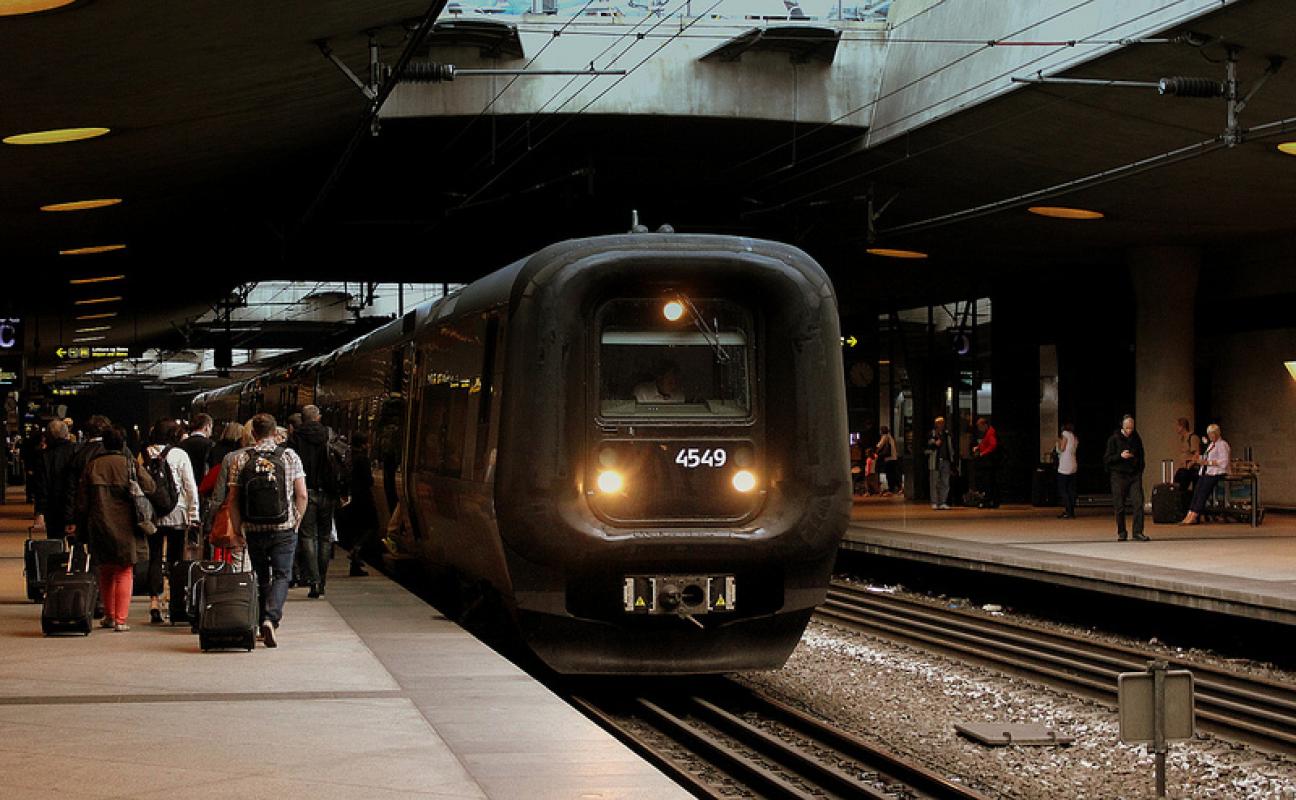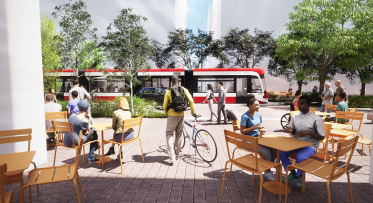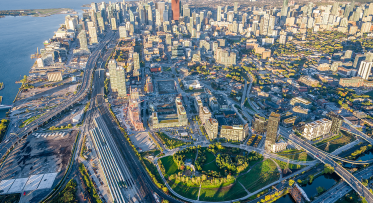Well-Thought-Out Transit is Key to Making Commuting Less Stressful
Seamless, efficient and usable urban transport options in Sweden and Denmark make it easy and stress-free to get around. Creating an integrated system that works takes you farther than preaching “leave the car home,” says York University psychology professor David L. Wiesenthal. (Image credit: calflier001 on Flickr, Copenhagen Kastrup Airport Rail Station)
POSTED: AUGUST 12, 2014
BY: DAVID L. WIESENTHAL, YORK UNIVERSITY (GUEST CONTRIBUTOR)
As a traffic psychologist, along with my students and colleagues, I have researched driver stress. We have found, not surprisingly, that drivers who are dealing with congested roads display the classic stress response of irritability and mood changes. That comes as no surprise, but it is notable that drivers who have higher baseline levels of stress display a more dramatic stress response compared to other drivers who have lower baseline stress levels. One major consequence of driver stress is an increase in rude behaviour and aggressive driving. I often have commented that public transportation (where available) and carpooling are good alternatives to enduring the twice-a-day stress of the daily commute. But when I think about the confusing and unreliable network of public transportation in the GTA, my mind wanders back to a sabbatical leave partially spent at Lund University in southern Sweden. That experience opened my eyes to what an effective integrated and well-thought-out mass transportation system offered to the public. The usability of the system promotes mass transportation without the moralistic preaching that so often accompanies North American exhortations to leave the car home and take the bike, bus, streetcar, subway, or train.
I was traveling to Helsingborg which is right across the Baltic from the Danish town of Helsingor, the site of Kronborg, Hamlet’s alleged castle. When I flew in to Copenhagen (the nearest airport to my destination), I was surprised to find a railroad station located adjacent to the airport’s baggage claim. I was able to use my credit card to purchase a ticket on the Danish rail system that took me to a central ferry building in Helsingborg. This building not only hosted the ferries for the short trip across the Øresund to Denmark, but along with a station of the Swedish rail system, it was the hub for regional buses.
My hosts took me to the Louisiana Museum of Modern Art in Denmark, and we were able to purchase a discounted trip package at the ferry building that not only included ferry tickets, but also tickets for the train that would take us to the gallery, along with the museum admission. On another outing, my family took an overnight ferry (which was more like a small cruise ship complete with restaurants, night club, casino, and of course, a sauna) from Stockholm to Helsinki. I had rented a car and wondered how I could return the car and then get to the ferry dock. The auto rental agency said to park the car on the ferry dock, hand the keys to the parking lot attendant and then board the boat. Amazing! On our return from Finland, the ferry company provided a free bus that would either take us to Stockholm’s Central Rail Station or to Arlanda Airport. Clearly, the ferry company was aware that the dock was not the end of their passengers’ voyage. The message to me was that major transportation hubs like airports and rail stations need to provide a wide array of connections to rail and bus transportation – a valuable lesson for the GTA and beyond.
As for bicycles, Helsingborg was quite accommodating to the needs of cyclists, where their safety was a priority. There were separate bicycle lanes, removed from car and truck traffic alongside pedestrian foot paths, both clearly differentiated by logos on the pavement. At street crossings, bicycle traffic lights were placed low enough so that cyclists could easily observe the signals. The bicycles were mostly gearless and had sturdy, heavy frames, resulting in speeds considerably slower, and thus safer, than the bikes racing on Toronto streets in a version of the Tour de France.
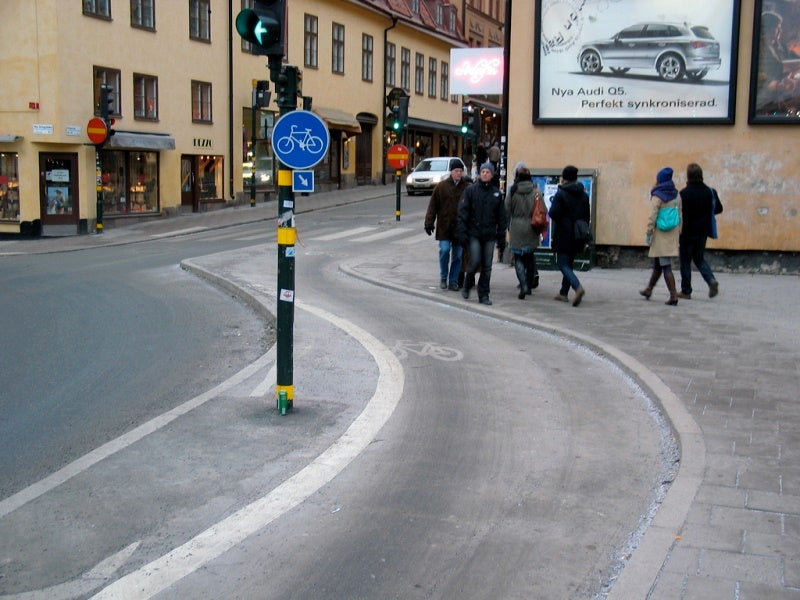
Cyclist safety is a priority in Denmark and Sweden, with segregated bike lanes and special traffic signals for cyclists being common. (Image credit: Martti Tulenheimo from Flickr)
The inter-city train system was efficient and rigidly adhered to the published timetable. If the departure time was 10:57 and a traveler appeared at 11:00, the train had already left the station. Families traveling with young children could travel in a family carriage that had an open play area (about half the size of the carriage) for younger children who might wish to move around rather than be confined to a train seat. I rode in “silent cars” that banned cell phone use, making the ride quite pleasant. The trains were comfortable and the cars remained upright on sharp curves thanks to a gimbaled attachment of the passenger compartment to the rail car’s base. The passengers didn’t have to feel like they needed to “hike out” like tacking sailors in a dinghy.
With separate systems for Toronto, York Region, Mississauga, and Brampton, our transportation is poorly integrated – separate fares for the TTC and regional buses, uncoordinated scheduling with regional systems, gaps in evening and weekend service, etc. Although we may live and work in different regions, we don’t have a seamless system of public transportation. This forces us to pay separately for riding on each region’s public transportation system. When my children were in high school, they needed to have student passes for York Region buses, additional student identification to use the TTC, and yet another card (the International Student Identification Card, ISIC) for use on VIA rail. The ISIC card is accepted internationally for transportation and museum discounts for students, but apparently the GTA is an exception. A one-fare system with a card usable across the region would simplify matters.
GO trains have very limited service to places like Markham and Stouffville, with only a few trains servicing morning and evening rush hours. Why aren’t the GO trains operating all day on, say, a half-hour schedule which might accommodate shoppers, matinee attendees and retired folk? My own workplace, York University, is finally going to be connected to the subway system which should offer some reduction to the more than 1800 buses now serving the campus on a daily basis. Years ago, the TTC wouldn’t service the campus, forcing the university to resort to operating their own bus line from the Keele Street campus to and from Glendon College and the Finch subway station. Clearly, Toronto has come very late to the idea of a comprehensive subway system and the additions to it are now both costly and difficult to implement. The New York City subway system was built at the turn of the last century during the peak period of American immigration. That subway was built across farmland and empty fields and, by doing so, directed the patterns of settlements from Manhattan to the outlying boroughs. Pictogram mosaics helped the people who couldn’t read negotiate the system and facilitated usability. Aside from commuter benefits, extending the subway will change the pattern of residences and commercial buildings and increase densities along its lines.
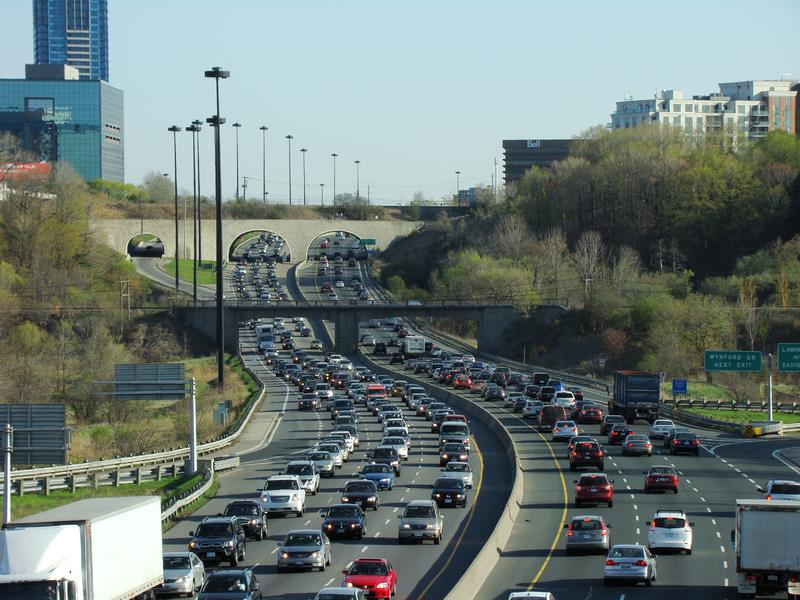 Congestion on Toronto’s Don Valley Parkway is stressful and frustrating – and bad for your health. (Image credit: Floydian from Wikimedia Commons)
Congestion on Toronto’s Don Valley Parkway is stressful and frustrating – and bad for your health. (Image credit: Floydian from Wikimedia Commons)
As a traffic psychologist, I feel that improving urban transportation would make a valuable contribution to health promotion by reducing driver stress and roadway frustrations with its physiological and psychological consequences. We need to look beyond the GTA for inspiration, but not simply imitate what exists elsewhere. We must move away from stagnation to implementation. This will take creativity in planning, financing and operating a unified system. Our greater community deserves a thoughtful re-examination of how we provide a simplified and integrated system of subways, trains, buses, streetcars, bicycles, and air transportation that minimizes cost to the user, while offering safety, convenience and people-friendly service seven days a week, 24 hours a day, throughout the year.

